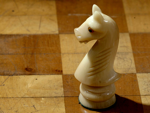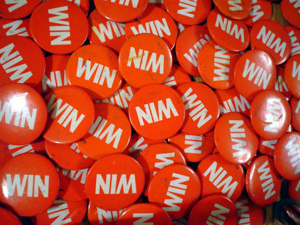 Since I released Day One, my approach to the classic day of the week for any date feat, I've been hearing back from people who've bought it.
Since I released Day One, my approach to the classic day of the week for any date feat, I've been hearing back from people who've bought it.
Some of them have developed some ingenious handlings for it that they've graciously allowed me to pass on to you.
Because Day One is a commercial product (more info available here) I am going to have to be intentionally vague about some aspects of the method. If you own the routine, however, everything should be clear enough.
The first tip involves the use of Wolfram|Alpha. Before you even ask for a year, ask your audience if anyone is carrying a mobile device on them that is currently able to access the internet, and to take it out and turn it if they do. You tell them to access wolframalpha.com, or use the Wolfram|Alpha mobile app, if they have it.
Once everyone with an online mobile device is ready, ask for the year. When the year is given, mention to those people online that they should type in the year followed by the word calendar. For example, if the year called is 1978, you tell your audience to enter the phrase 1978 calendar and hit return (or click the little orange equals sign).
At this point, you'll have a natural pause while people type, which allows you some extra time to determine the doomsday for the given year. Once you get the year's doomsday, you can ask, "Does everyone have a calendar before them? Good!"
This also help minimize the need to carry a perpetual calendar for verification. Be aware that mobile devices may not always be present or may not have online access, so there's still a need to carry a perpetual calendar. You can find an offline perpetual app for your system using Quixey.
The next tip concerns a way of verbally working out the doomsday, without the audience being the wiser. Begin by making sure they have a perpetual calendar in front of them. This tip works well with the book Gregorian Calendar Sheets of the Years 1582 - 2399, which allows you to state in advance the page on which a given year's calendar is located.
When you're given a date in the 1900s, work it out as in the Day One instructions, as if it were in the 2000s. When you get that day of the week, immediately state that is the day on which Christmas falls in the given year, then move one day forward and state that this new day is when Halloween falls in that year. The day of the week you give for Halloween is also the day of the week you need to remember.
All at once, then, you've worked out the year information, created the first amazing moment in the routine, adjusted for the 1900s, and even stated the doomsday out loud (making it easier to remember)!
The previous tips all work for any version of Day One, whether you're in a close-up, parlor, or stage venue. The final tip is for stage and parlor, as it involves the use of a large calendar with pockets for holding the month and dates.
The dates 1 through 31 are set up in the calendar as if the 1st of the month fell on a Sunday and the 31st were on a Tuesday. You're holding the cards with the days on them in your hands face-up in Sunday through Saturday order, with Sunday on top facing you, and the bottom-most card being Saturday. The cards with the month names are displayed on a nearby table.
After the audience member gives you the year, you spread the day cards out in your left hand as you work out the doomsday you need. When you get ready to ask them for the month, pick up all the cards above the card showing the doomsday with your right hand, and use those to gesture towards the month cards as you ask them to choose a month card and place it in the topmost pocket of the calendar.
For example, if someone asks for the year 1973, you work out that the doomsday is Wednesday. With the cards already fanned in your left hand, you would pick up all the cards above the Wednesday card (Sunday, Monday, and Tuesday), and use them to gesture towards the month cards and ask them to place one on the calendar.
When you're done making your gesture towards the months, you place the left hand's day cards on top of the right hand's cards and close the spread, so that the doomsday is now showing on top. In our 1973 example, the Wednesday card would be on top at this point. As soon as they choose the month and you recall the month's key date, you're ready to place the day of the week cards in the appropriate spots (as in the standard Day One routine).
This simple and un-emphasized cut of the doomsday card to the top means that you have one less thing to remember in your performance. You no longer have to focus on remembering the doomsday once you've got it, because it's in your hand staring you in the face!
If you've come up with your own clever additional touches for Day One, I'd love to hear about them in the comments!




 One of the oldest
One of the oldest 




 Last month,
Last month, 


